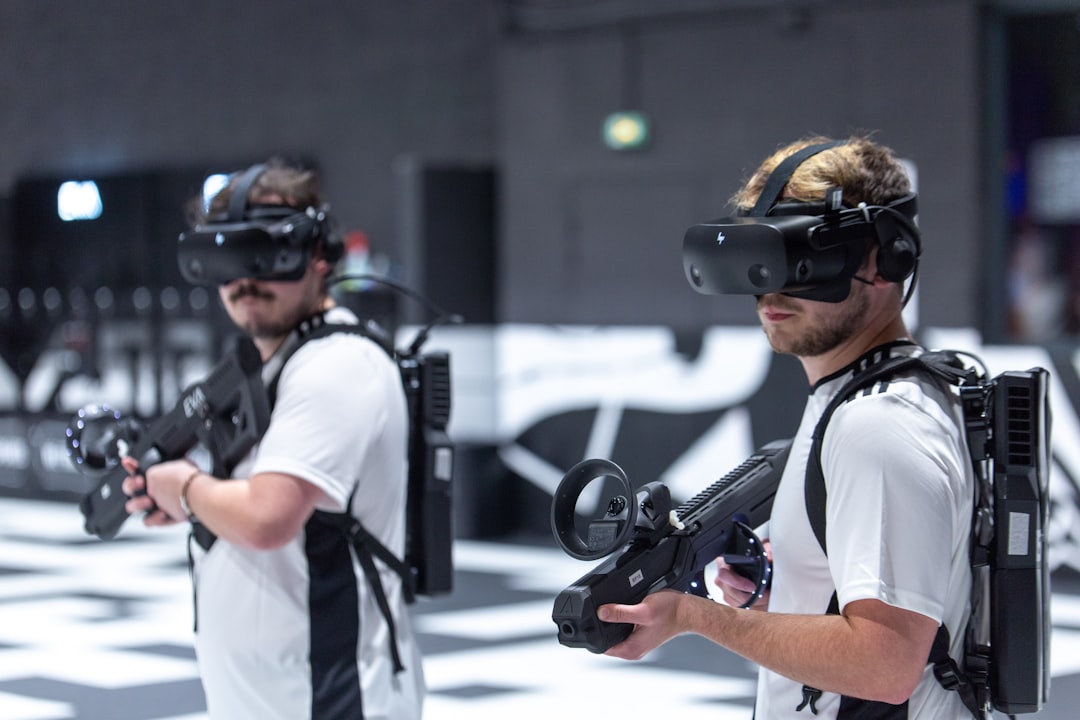The Metaverse represents a convergence of virtual reality (VR), augmented reality (AR), and the internet, creating an expansive digital universe where users can interact with each other and the environment in real-time. This immersive space is not merely a collection of virtual worlds; it is a fully realized ecosystem that encompasses social interactions, economic transactions, and creative expressions. The term “Metaverse” was popularized by Neal Stephenson’s 1992 science fiction novel “Snow Crash,” where it described a virtual reality space populated by avatars of real people.
Today, the concept has evolved significantly, fueled by advancements in technology and the growing demand for immersive experiences. In practical terms, the Metaverse can be understood as a persistent, shared digital environment that exists parallel to our physical world. Users can access it through various devices, including VR headsets, smartphones, and computers.
Within this realm, individuals can engage in a multitude of activities ranging from gaming and socializing to attending virtual events and conducting business. The Metaverse is characterized by its user-generated content, where participants can create their own experiences, environments, and even economies. This democratization of content creation is one of the key features that distinguishes the Metaverse from traditional online platforms.
Key Takeaways
- The Metaverse is a virtual reality space where users can interact with a computer-generated environment and other users.
- The Quest 2 is a popular VR headset that allows users to explore the Metaverse and experience virtual adventures.
- In the Metaverse, users can engage in various virtual experiences such as gaming, social events, and educational activities.
- Socializing and connecting with others in the Metaverse allows for new forms of interaction and collaboration in a virtual environment.
- Creating and customizing your virtual identity in the Metaverse offers opportunities for self-expression and personalization.
Getting Started with the Quest 2
To navigate the Quest 2 effectively, users must first familiarize themselves with its interface and controls. The headset features intuitive hand tracking and motion controls that enable users to interact with virtual objects seamlessly. The Oculus Home environment serves as a launching point for accessing various applications and experiences within the Metaverse.
Exploring the Metaverse with the Quest 2
Users can browse through a library of games, social platforms, and creative tools, each offering unique opportunities for exploration and engagement. Additionally, the Quest 2 supports cross-platform compatibility, allowing users to connect with friends and other players across different devices, further enhancing the social aspect of their Metaverse experience.
Unlocking the Full Potential of the Quest 2
With its advanced features and user-friendly design, the Quest 2 offers endless possibilities for exploring the Metaverse. By mastering its controls and interface, users can unlock a world of immersive experiences, interactive games, and creative tools, making the Quest 2 an essential device for anyone looking to dive into the Metaverse.
Virtual Adventures and Experiences in the Metaverse

The Metaverse is teeming with virtual adventures that cater to a wide range of interests and preferences. From immersive gaming experiences to educational simulations, users can find countless opportunities to explore new worlds and engage in thrilling activities. Popular titles such as “Beat Saber” and “VRChat” exemplify the diverse offerings available within this digital landscape.
In “Beat Saber,” players wield lightsabers to slice through musical blocks in rhythm with an energetic soundtrack, while “VRChat” allows users to socialize and create their own virtual spaces using customizable avatars. Beyond gaming, the Metaverse also hosts a variety of experiences designed for learning and personal growth. Educational platforms like “Engage” provide immersive environments where users can attend lectures, participate in workshops, or collaborate on projects with peers from around the globe.
These experiences leverage the unique capabilities of VR to create engaging learning environments that transcend traditional classroom settings. For instance, students can explore historical landmarks or conduct scientific experiments in virtual labs, making education more interactive and accessible.
Socializing and Connecting with Others in the Metaverse
| Platform | Number of Users | Engagement Metrics |
|---|---|---|
| Facebook Horizon | Unknown | Time spent in virtual events, interactions with avatars |
| VRChat | Over 5 million | Number of worlds visited, avatars created |
| AltspaceVR | Unknown | Attendee numbers at events, social interactions |
One of the most compelling aspects of the Metaverse is its ability to foster social connections among users from diverse backgrounds. Virtual worlds serve as meeting places where individuals can gather, interact, and form communities based on shared interests. Platforms like “Rec Room” and “AltspaceVR” provide spaces for users to engage in activities such as games, discussions, or even live performances.
These environments encourage collaboration and creativity while breaking down geographical barriers. The social dynamics within the Metaverse are further enhanced by the use of avatars, which allow users to express themselves in unique ways. Avatars can be customized to reflect personal identities or imaginative personas, enabling individuals to explore different facets of themselves in a safe and inclusive environment.
This freedom of expression fosters a sense of belonging among users, as they can connect with others who share similar interests or experiences. Moreover, many platforms incorporate features such as voice chat and gestures, facilitating real-time communication that mimics face-to-face interactions.
Creating and Customizing Your Virtual Identity
Creating a virtual identity is a fundamental aspect of participating in the Metaverse. Users have the opportunity to design their avatars to reflect their personalities, interests, or even aspirations.
This level of personalization allows individuals to craft identities that resonate with them on a deeper level. The significance of virtual identity extends beyond mere aesthetics; it plays a crucial role in how users interact within the Metaverse. A well-crafted avatar can enhance social interactions by providing a sense of presence and individuality.
For instance, an artist might choose to embody their creative spirit through vibrant colors and artistic attire, while a gamer might opt for a more dynamic look that reflects their competitive nature. This ability to curate one’s identity fosters a sense of agency and empowerment within the digital realm.
Challenges and Opportunities in the Metaverse

Privacy and Security Concerns
One of the primary concerns in the Metaverse is the issue of privacy and security. As users engage in various activities, they often share personal information that could be vulnerable to exploitation. To mitigate this risk, it is essential to implement robust data protection measures that maintain user trust and safety.
Toxicity and Harassment in Virtual Spaces
Another challenge in the Metaverse is the potential for toxicity and harassment within virtual spaces. Just like in any online community, negative behaviors can manifest, leading to uncomfortable or harmful experiences for users. To address this issue, developers must create effective moderation tools and community guidelines that foster respectful interactions among participants.
The Metaverse offers numerous opportunities for creativity and economic growth, despite the challenges it poses. Artists, developers, and entrepreneurs can leverage this digital landscape to showcase their work or launch new ventures.
Opportunities for Creativity and Economic Growth
Virtual marketplaces enable creators to sell digital assets such as art, music, or virtual real estate, opening up new revenue streams that were previously unimaginable. Additionally, businesses are beginning to explore ways to integrate into the Metaverse through virtual storefronts or immersive advertising campaigns. By promoting positive engagement and addressing harmful behaviors proactively, platforms can cultivate inclusive environments that encourage diverse participation.
Fostering a Positive and Inclusive Environment
Ultimately, the key to unlocking the full potential of the Metaverse lies in creating a positive and inclusive environment that encourages users to engage with one another in a respectful and meaningful way. By doing so, we can harness the power of this revolutionary technology to build a brighter, more connected future for all.
The Future of the Metaverse and Quest 2
As technology continues to advance at an unprecedented pace, the future of the Metaverse holds immense potential for transformation. The Meta Quest 2 is likely to play a pivotal role in shaping this evolution by providing users with increasingly sophisticated tools for exploration and interaction.
Moreover, as more individuals embrace remote work and digital collaboration, the demand for immersive environments will likely grow. Companies may invest in creating virtual offices or meeting spaces within the Metaverse to facilitate teamwork and communication among distributed teams. This shift could redefine how we perceive workspaces and collaboration in general.
Tips for Making the Most of Your Metaverse Experience
To fully enjoy your time in the Metaverse using devices like the Quest 2, consider several practical tips that can enhance your experience. First and foremost, take time to explore various platforms and applications available within the Metaverse ecosystem. Each offers unique features and experiences that cater to different interests; finding those that resonate with you will enrich your overall journey.
Additionally, engage actively with communities by participating in events or discussions relevant to your interests. Whether it’s joining a gaming tournament or attending a virtual concert, these interactions can lead to meaningful connections with others who share your passions. Don’t hesitate to customize your avatar; this not only enhances your personal experience but also helps you stand out in social settings.
Lastly, prioritize your comfort while navigating virtual environments. Adjust your headset settings for optimal visual clarity and take regular breaks to avoid fatigue during extended sessions. By being mindful of your well-being while exploring this vast digital landscape, you can ensure that your adventures in the Metaverse remain enjoyable and fulfilling.
If you’re interested in learning more about the intersection of artificial intelligence and the metaverse, be sure to check out this informative article on Artificial Intelligence in the Metaverse. This piece delves into how AI is shaping virtual worlds and enhancing user experiences in platforms like the Oculus Quest 2. For additional resources on online communities within the metaverse, you can also explore this helpful guide on Glossary of Metaverse Terms for a deeper understanding of key concepts and terms.
FAQs
What is the metaverse on Quest 2?
The metaverse on Quest 2 refers to a virtual reality platform that allows users to interact with a digital environment using the Oculus Quest 2 headset. It offers a range of immersive experiences, social interactions, and entertainment options.
What can you do in the metaverse on Quest 2?
In the metaverse on Quest 2, users can engage in various activities such as gaming, socializing with others, attending virtual events, exploring virtual environments, and creating and sharing content.
How do you access the metaverse on Quest 2?
To access the metaverse on Quest 2, users need to have an Oculus Quest 2 headset and a compatible device. They can then download and install the necessary apps and software to enter the virtual reality environment.
Is the metaverse on Quest 2 free to use?
Accessing the metaverse on Quest 2 may require purchasing the Oculus Quest 2 headset and potentially paying for certain apps, games, or experiences within the virtual environment. Some content may be free, while others may require payment.
What are the potential uses of the metaverse on Quest 2?
The metaverse on Quest 2 has various potential uses, including gaming, virtual meetings and events, virtual tourism, education and training, virtual shopping experiences, and creative expression through virtual art and design.

Leave a Reply